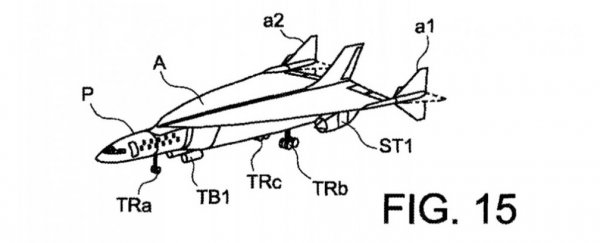Last month, the US Patent and Trademark Office approved an application from Airbus's Marco Prampolini and Yohann Coraboeuf for an "ultra-rapid air vehicle and related method of aerial locomotion". In other words, Airbus just patented a hypersonic jet. Airbus expects the hypersonic jet to reach speeds as high as Mach 4.5 - or four and half times the speed of sound.
According to PatentYogi's Deepak Gupta, this means the Airbus jet could make the trip from London to New York in just 1 hour. That's a significant improvement over the 3.5 hours it took for the now retired Mach 2 Concorde to make the same trip. The Concorde was a joint venture between Airbus's two predecessors - France's Aerospatiale and British Aerospace.
The hypersonic jet would also completely demolish the 7 to 8 hours it takes a conventional airliner, such as Airbus' own A330, to cross the Atlantic. In addition, Airbus predicts the patented craft will be able to complete trips like Paris to San Francisco or Tokyo to Los Angeles in just 3 hours.
 US Patent and Trademark Office
US Patent and Trademark Office
In the patent, Airbus describes the craft as "an air vehicle including a fuselage, a gothic delta wing positioned either side of the fuselage, and a system of motors able to propel the air vehicle".
The hypersonic jet is powered by three different types of engines working in sequential order to get the craft aloft, into cruising altitude, and then up to its cruising speed of more than 3,000 mph (4,800 km/h).
To get off the ground, the craft will uses a pair of turbojets mounted underneath the fuselage as well as a rocket motor mounted in the rear. As the Airbus lifts off the runway, it will climb vertically like the Space Shuttle.
Right before reaching the speed of sound, the turbojets shut down and retract into the belly of plane - leaving only the rocket motor to guide it up to an altitude of more than 100,000 feet (30,500 m).
At cruising altitude, the rocket motor will shut down and retract into the fuselage. At which point the plane's pair of wing-mounted ramjets take over and propel it to a top speed of Mach 4.5. Airbus expects it to be powered by various forms of hydrogen stored on board the craft.
 US Patent and Trademark Office
US Patent and Trademark Office
According to Airbus, much of the plane's aerodynamics are designed to limit and reduce the sonic boom it will create when it reaches supersonic speed. In the 1970s, the Concorde was beset by complaints of sonic booms and noise pollution created by its four Rolls-Royce Olympus turbojet engines. Consequently, it was prevented from operating over land.
As a result, the supersonic Anglo-French airliner was never able to become the financially viable mainstream passenger transport its creators had hoped for. Instead, the 14 production Concordes spent their 27-year career shuttling well-heeled VIPs across the Atlantic.
 US Patent and Trademark Office
US Patent and Trademark Office
Airbus believes the hypersonic jet could have both civilian and military applications. In civilian trim, the craft could serve as private jet or as an airliner with room for 20 passengers. In military trim, the jet could serve as a hypersonic transport for commandos or as a reconnaissance plane like the SR71 Blackbird.
In addition, Airbus has also proposed a variant armed with high-power electromagnetic pulse weapons to conduct precision strikes on high-value targets.
As with the majority of patented ideas, it's unlikely the jet will ever enter production. However, technology derived from the hypersonic plane could make its way into Airbus's other less extreme products.
 US Patent and Trademark Office
US Patent and Trademark Office
For more information on the Airbus jet, check out the full patent at the USPTO database or this video from PatentYogi:
This article was originally published by Business Insider.
More from Business Insider:
